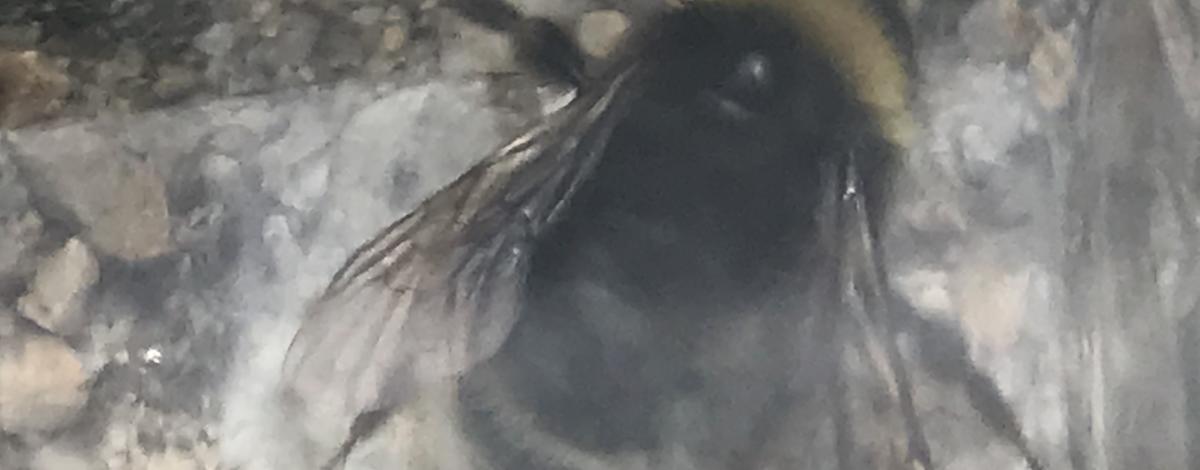In a previous blog (July 1, 2019, "Rare Bumblebee Species Found on WMA"), I wrote about finding Western bumblebees (Bombus occidentalis) on the Boundary-Smith Creek Wildlife Mangagement Area (WMA). Admittedly, I felt pretty special. But, this past weekend, I’ve happily abdicated this feeling to our volunteer citizen scientists, because they did it again… TWICE!
With kids from Selkirk Outdoor Leadership and Education (SOLE) and several other families joining together to survey for bumblebees during our Friday Family Day at the WMA, I had high hopes in finding more of those gorgeous yellow-shouldered, white-bottomed Westerns. But the weather was gray and wet, as days often are this summer. For an hour, we roamed around the Smith Creek Picnic Area picking up bumblebees here and there. It was not the bee bonanza it had been last July. Then, just as a cloud started to burst with rain, a small girl and her grandma looked on as her mom netted a Western Bumblebee. We whooped while the rain poured down, and ushered the bee safely into the shelter of a jar and showed her to the others.
One of those other families returned the next day to collect seeds during our Saturday collection day on the opposite end of the WMA. But from the time the girls jumped out of the car to the time we returned with our Oregon grapes, all they wanted to do was net bumblebees. Luckily, I still had nets and jars in the back of my car. So for two hours, they caught bee after bee after bee, stopping every so often to smush Oregon grapes with their toes or swish them around in creek water to separate out the seeds. When we packed up our cleaned seeds and there was nothing left to do but find bees, that’s exactly what they did: two white-bottomed Westerns bumblebees!
Once abundant across Western North America, Western bumblebees are now a rare find. Boundary-Smith Creek WMA is smack in the center of their steadily contracting range. The sightings we’ve had over the last few weeks, being miles apart from each other, indicate there are several nests. Idaho Fish & Game biologists are working to learn more about bumblebee populations on the WMA, and improve habitat for them. And our volunteers are contributing to this work while experiencing the ways in which Idaho’s WMA’s are already doing their job as a place for wildlife, from bees to bears, to thrive.

